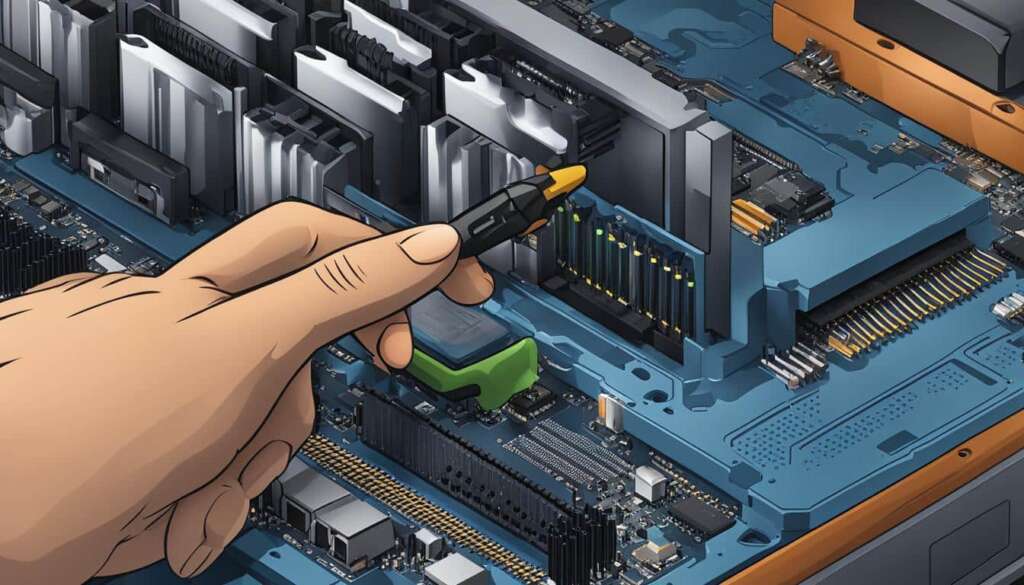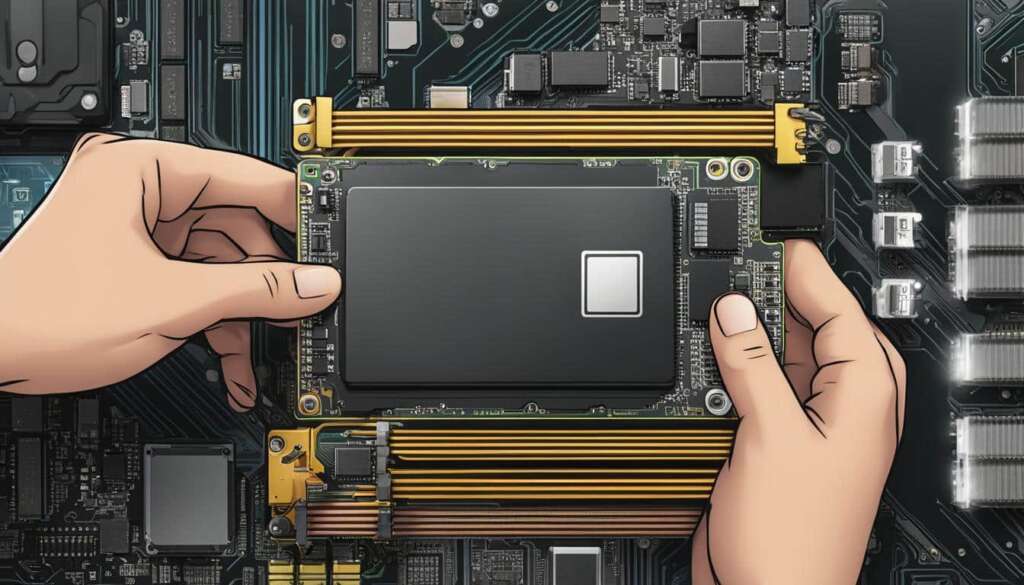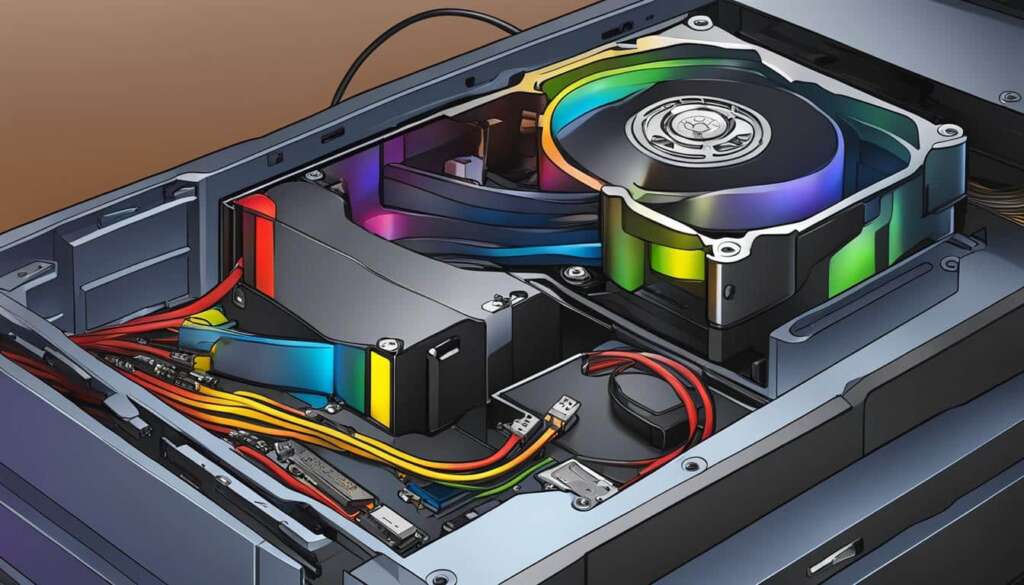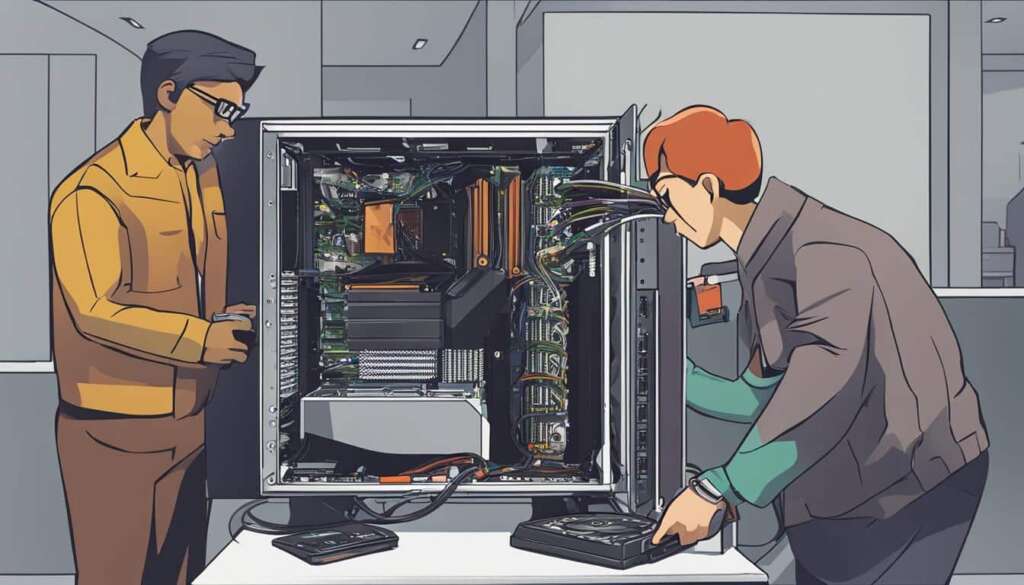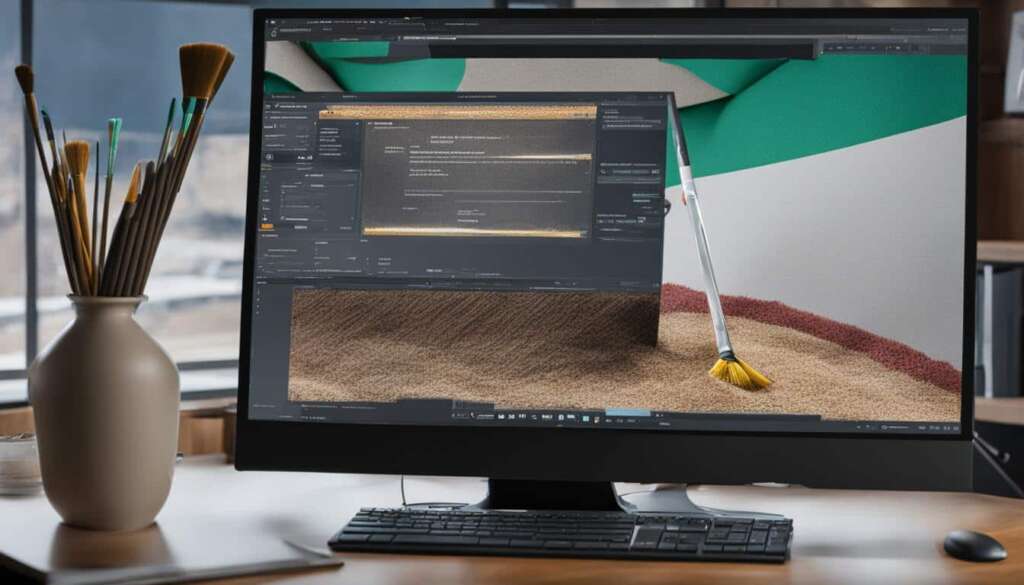Table of Contents
Before checking how much RAM your PC has, it’s important to understand what RAM is and how it differs from other forms of computer storage. Random Access Memory (RAM) is a type of volatile memory that is used by your computer to store data that it needs to access quickly while it is running. Unlike the hard drive or SSD, which are used for long-term storage, the RAM is used for temporary storage during the operation of applications and processes.
Knowing the amount and type of RAM in your PC is crucial for optimizing performance and ensuring compatibility with software requirements. Different systems have different methods for checking RAM, so we’ve prepared a quick guide to help you check your RAM on various operating systems.
How to Check RAM on Windows:
To check your RAM on Windows, follow these steps:
- Press the Windows key + R on your keyboard to open the Run dialog box.
- Type “msinfo32” and press Enter. This will open the System Information window.
- In the System Information window, locate “Installed Physical Memory (RAM)” under the “System Summary” section. Here, you can see the total amount of RAM installed on your PC.
How to Check RAM on Mac:
To check your RAM on a Mac, follow these steps:
- Click on the Apple menu in the top-left corner of your screen and select “About This Mac.”
- In the new window that opens, click on the “Overview” tab.
- Here, you will see the total amount of RAM installed on your Mac under the “Memory” section.
Checking your RAM on your PC is a simple process that can provide valuable information about your system’s performance capabilities. Armed with this knowledge, you’ll be better equipped to determine if upgrading your RAM is necessary to meet your computing needs.
How Much RAM Do You Need?
The amount of RAM you need for your PC depends on how you use your computer and the specific tasks you perform. Having enough RAM ensures smooth and efficient performance, allowing your computer to handle multiple tasks simultaneously without slowing down. Whether you’re a casual user, gamer, or professional video editor, understanding your RAM requirements is crucial for optimizing your computing experience.
For most general users, 8 GB of RAM is sufficient for smooth and fast performance. This is suitable for activities like browsing the web, checking emails, and using standard office software. However, if you engage in more demanding tasks such as gaming, video editing, or multitasking with resource-intensive applications, you may need to upgrade your RAM to ensure optimal performance.
For gaming:
If you’re a passionate gamer, consider upgrading your RAM to at least 16 GB. This will provide ample memory to run modern games smoothly, allowing for faster loading times and more immersive gameplay.
For video editing:
Video editing software, such as Adobe Premiere Pro or Final Cut Pro, requires substantial amounts of RAM to process and preview high-resolution footage. To ensure a seamless editing experience, it is recommended to have a minimum of 16 GB or more, depending on the complexity of your projects.
For multitasking:
If you frequently find yourself running multiple applications simultaneously, such as web browsers, productivity tools, and media players, upgrading to 16 GB or 32 GB of RAM can significantly enhance your multitasking capabilities. This will prevent slowdowns and ensure smooth performance when switching between various tasks.
Keep in mind that these recommendations are based on the current requirements of most software and activities. It’s always a good idea to research the RAM requirements of any specific applications you use regularly or plan to use in the future.
In summary, determining how much RAM you need involves considering your specific usage patterns and the nature of your tasks. By upgrading your RAM, you can enhance your computer’s performance for gaming, video editing, multitasking, and other activities that demand more memory. Make sure to check the RAM requirements of your favorite software and adjust your RAM capacity accordingly to ensure a smooth and efficient computing experience.
How to Upgrade RAM and Verify Memory Errors
If you’ve determined that your PC needs an upgrade to handle your usage requirements, upgrading the RAM can significantly improve its performance. Before proceeding, it’s crucial to ensure that you choose compatible memory modules for your specific PC.
Popular RAM manufacturers like Crucial, Kingston, and Corsair offer product finders on their websites, allowing you to search for compatible RAM upgrades based on your computer’s specifications. Using these tools, you can easily identify the right RAM modules to install.
Once you have the compatible RAM modules, follow these steps to upgrade your RAM:
1.
Shut down your computer
: Before installing any hardware, make sure to turn off your computer and unplug the power cord.
2.
Open the case
: Locate and remove the screws or latches that hold your computer’s case together. Gently remove the case cover to access the internals.
3.
Locate the RAM slots
: Identify the RAM slots on your motherboard. These slots are usually long and narrow, and you may have two or more slots available.
4.
Remove existing RAM modules (if applicable)
: If your motherboard already has RAM modules installed, carefully remove them by pushing back the small tabs on either side of the module. The module will then pop up, allowing you to remove it.
5.
Install the new RAM modules
: Insert the new RAM modules into the empty slots, aligning the notch on the module with the slot’s notch. Apply equal pressure on both ends until the module clicks into place.
6.
Close the case
: Once the RAM modules are securely installed, carefully close the computer case and reattach any screws or latches.
7.
Power on your computer
: Plug in the power cord and turn on your computer to ensure it recognizes the new RAM modules.
After upgrading your RAM, it’s also essential to check for memory errors. Both Windows and macOS offer built-in memory diagnostic tools:
–
Windows Memory Diagnostics
: In Windows, you can access the Windows Memory Diagnostics tool by typing “Windows Memory Diagnostic” into the Start menu search bar. Follow the on-screen prompts to perform a memory test and identify any errors.
–
macOS Activity Monitor
: On a Mac, you can use the Activity Monitor application to check RAM usage and identify any potential errors. Open Spotlight (Cmd + Space) and type “Activity Monitor” to launch the application. Navigate to the “Memory” tab to view RAM usage and detect any anomalies.
By following these steps, you can successfully upgrade your RAM and ensure its compatibility while also verifying the memory for any errors.
FAQ
How do I check the RAM on my PC?
On Windows, you can check your RAM by following these steps:
1. Press the Windows key + R to open the Run dialog box.
2. Type “msinfo32” and press Enter.
3. In the System Information window, navigate to the “Installed Physical Memory (RAM)” section to see the amount of RAM installed on your PC.
On Mac, you can check your RAM by following these steps:
1. Click on the Apple menu and select “About This Mac.”
2. In the Overview tab, you will see the amount of RAM installed under the “Memory” section.
What type of RAM do I have on my PC?
To determine the type of RAM on your PC, you can follow these steps:
1. Press the Windows key + R to open the Run dialog box.
2. Type “msinfo32” and press Enter.
3. In the System Information window, navigate to the “Memory” section to see the type of RAM installed on your PC.
How can I check the RAM usage on Windows?
To check the RAM usage on Windows, you can use the Task Manager. Follow these steps:
1. Right-click on the taskbar and select “Task Manager” from the menu.
2. In the Task Manager window, go to the “Performance” tab.
3. Under the “Memory” section, you will see the current RAM usage and other details.
How can I check the RAM usage on Mac?
To check the RAM usage on Mac, you can use the Activity Monitor. Here’s how:
1. Open the “Applications” folder and navigate to the “Utilities” folder.
2. Open “Activity Monitor.”
3. In the Activity Monitor window, go to the “Memory” tab.
4. You will see the current RAM usage and other details under the “Memory Pressure” graph.
How much RAM do I need for gaming?
The amount of RAM you need for gaming depends on the specific games you play and their system requirements. Generally, for smooth gaming performance, it is recommended to have at least 8 GB of RAM. However, some newer and more demanding games may benefit from having 16 GB or more of RAM.
How much RAM do I need for video editing?
Video editing can be a resource-intensive task, and having enough RAM is crucial for smooth editing performance. For most video editing software, it is recommended to have at least 16 GB of RAM. However, if you work with high-resolution footage or complex projects, having 32 GB or more of RAM would be beneficial.
How do I upgrade my RAM on a PC?
To upgrade your RAM on a PC, you can follow these general steps:
1. Make sure to power off your PC and unplug it from the power source.
2. Open the PC case and locate the RAM slots.
3. Remove the old RAM modules by pushing the clips on the sides.
4. Insert the new RAM modules into the slots, making sure they are properly aligned.
5. Push the modules down until the clips lock them in place.
6. Close the PC case and plug in your PC.
It is important to note that the specific steps may vary depending on your PC model, so it’s recommended to consult your PC’s manual or manufacturer’s website for detailed instructions.
How do I check RAM compatibility before upgrading?
Before upgrading your RAM, it’s important to check its compatibility with your PC. You can do this by following these steps:
1. Identify the type of RAM your PC supports (e.g. DDR3, DDR4).
2. Determine the maximum amount of RAM your PC can handle.
3. Consider the speed (MHz) of the RAM modules you want to install.
4. Find and refer to your PC’s manual or the manufacturer’s website to ensure compatibility.
Alternatively, you can use online tools provided by RAM manufacturers like Crucial, Kingston, or Corsair to find compatible RAM upgrades based on your PC’s specifications.
How can I check for memory errors in my RAM?
To check for memory errors in your RAM, you can use built-in diagnostic tools. On Windows, you can use the Windows Memory Diagnostics tool. Follow these steps:
1. Press the Windows key + R to open the Run dialog box.
2. Type “mdsched.exe” and press Enter.
3. Choose whether to restart your PC and check for problems immediately or schedule the check for the next time you restart.
4. Your PC will restart and the Windows Memory Diagnostics tool will automatically run.
On Mac, you can use the macOS Activity Monitor. Here’s how:
1. Open the “Applications” folder and navigate to the “Utilities” folder.
2. Open “Activity Monitor.”
3. In the Activity Monitor window, go to the “Memory” tab.
4. If there are any issues with your RAM, they will be displayed under the “Memory Pressure” graph.

